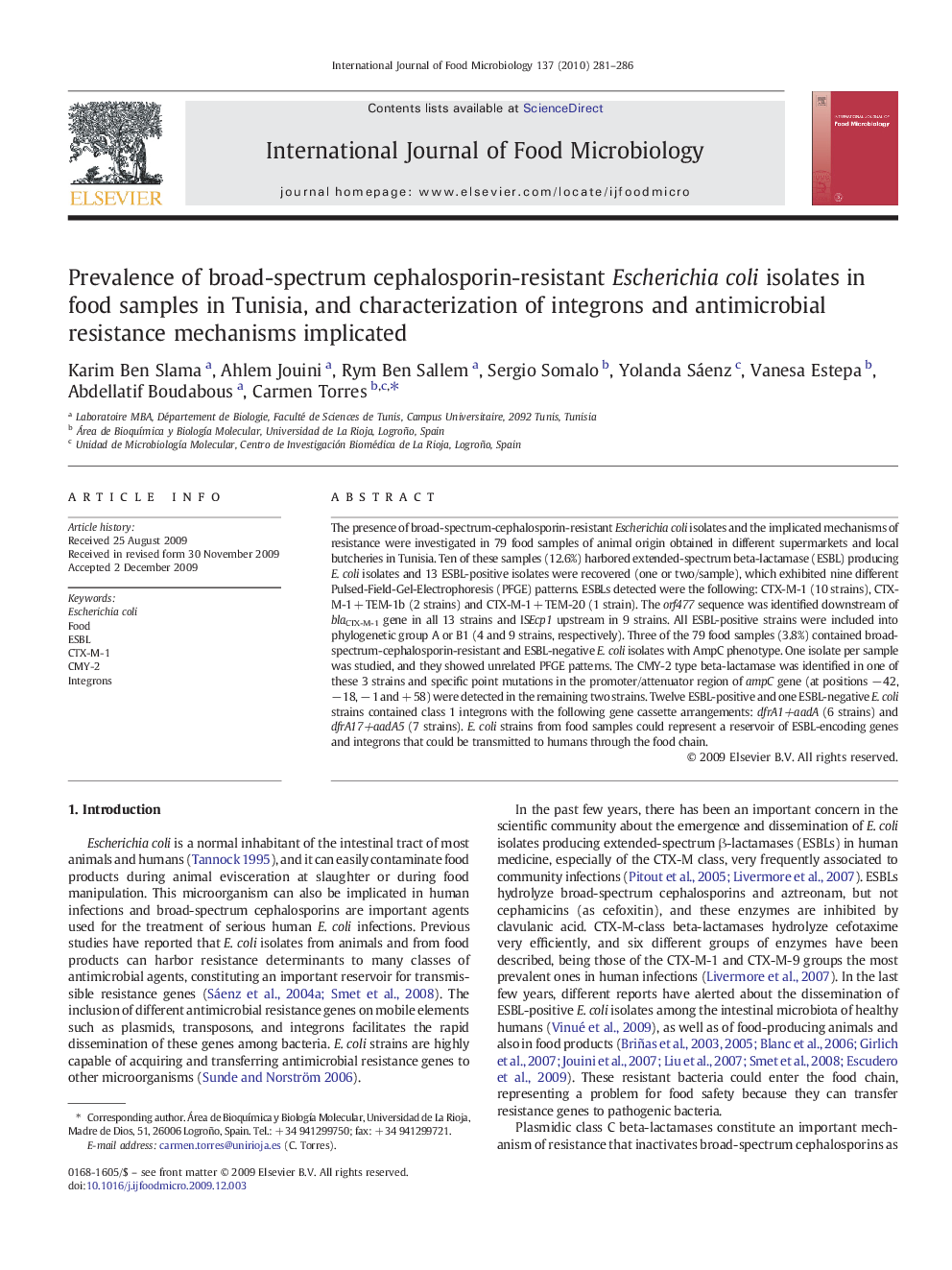| Article ID | Journal | Published Year | Pages | File Type |
|---|---|---|---|---|
| 4369111 | International Journal of Food Microbiology | 2010 | 6 Pages |
Abstract
The presence of broad-spectrum-cephalosporin-resistant Escherichia coli isolates and the implicated mechanisms of resistance were investigated in 79 food samples of animal origin obtained in different supermarkets and local butcheries in Tunisia. Ten of these samples (12.6%) harbored extended-spectrum beta-lactamase (ESBL) producing E. coli isolates and 13 ESBL-positive isolates were recovered (one or two/sample), which exhibited nine different Pulsed-Field-Gel-Electrophoresis (PFGE) patterns. ESBLs detected were the following: CTX-M-1 (10 strains), CTX-M-1 + TEM-1b (2 strains) and CTX-M-1 + TEM-20 (1 strain). The orf477 sequence was identified downstream of blaCTX-M-1 gene in all 13 strains and ISEcp1 upstream in 9 strains. All ESBL-positive strains were included into phylogenetic group A or B1 (4 and 9 strains, respectively). Three of the 79 food samples (3.8%) contained broad-spectrum-cephalosporin-resistant and ESBL-negative E. coli isolates with AmpC phenotype. One isolate per sample was studied, and they showed unrelated PFGE patterns. The CMY-2 type beta-lactamase was identified in one of these 3 strains and specific point mutations in the promoter/attenuator region of ampC gene (at positions â 42, â 18, â 1 and + 58) were detected in the remaining two strains. Twelve ESBL-positive and one ESBL-negative E. coli strains contained class 1 integrons with the following gene cassette arrangements: dfrA1+aadA (6 strains) and dfrA17+aadA5 (7 strains). E. coli strains from food samples could represent a reservoir of ESBL-encoding genes and integrons that could be transmitted to humans through the food chain.
Related Topics
Life Sciences
Agricultural and Biological Sciences
Food Science
Authors
Karim Ben Slama, Ahlem Jouini, Rym Ben Sallem, Sergio Somalo, Yolanda Sáenz, Vanesa Estepa, Abdellatif Boudabous, Carmen Torres,
